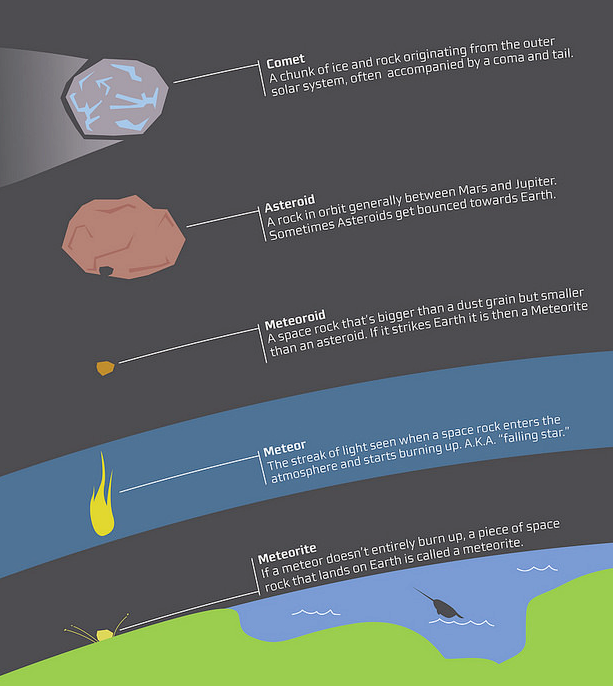Science & Technology
MukundPura Meteorite
- 11 Jan 2021
- 3 min read
Why in News
A recent study has shed light on the mineralogy of the meteorite named Mukundpura CM2 which fell in Mukundpura village near Jaipur in 2017.
- A meteorite is a solid piece of debris from an object, such as a comet, asteroid, or meteoroid, that originates in outer space and survives its passage through the atmosphere to reach the surface of a planet or moon.
Key Points
- About:
- The meteorite named Mukundpura CM2 was classified to be a carbonaceous chondrite. The composition of carbonaceous chondrites are also similar to the Sun.
- Chondrites are silicate droplet bearing meteorites, and this Mukundpura chondrite is the 5th carbonaceous meteorite known to fall in India.
- Classification Of Meteorite:
- Meteorites are classified into three groups: Stony (silicaterich), Iron (Fe–Ni alloy), and Stony Iron (mixed silicate iron alloy).
- Mukundpura CM2 is a type of stony meteorite, considered the most primitive meteorite and a remnant of the first solid bodies to accrete in the solar system.
- Components of Meteorite:
- Detailed spectroscopic studies revealed that the meteorite had very high (about 90%) phyllosilicate minerals comprising both magnesium and iron.
- Forsterite and FeO olivine, calcium aluminium rich inclusion (CAI) minerals.
- Few magnetites, sulphides, aluminium complexes and calcites were also found.
- Importance of studying Asteroid:
- Understanding of Solar system's history.
- How the solar system evolved into the Sun and planets of today.
- The effects of impact of meteorites.
- They are often rich in volatiles and other minerals and can be exploited for future planetary exploration.
Difference between Meteor, Meteorite and Meteoroid
- When meteoroids enter Earth's atmosphere (or that of another planet, like Mars) at high speed and burn up, the fireballs or “shooting stars” are called meteors.
- When a meteoroid survives a trip through the atmosphere and hits the ground, it's called a meteorite.







